The Gate City Street Railroad Company (variously 1881 or 1884) ran from near Five Points downtown to Ponce de Leon Springs. Opera house owner Laurent de Give was an investor. Pages 6 and 7 of Martin’s Mule to MARTA, Volume 1, show photos of the line’s car(s). Little else is known about this line, which later became the Union Street Railroad.
Archive for December, 2015
Gate City Street Railroad Company
Posted in Uncategorized on December 29, 2015| 1 Comment »
Lithia Springs Railway
Posted in Uncategorized on December 28, 2015| 1 Comment »
I have included the Lithia Springs Railway in this list, but I am reluctant to do so. Several sources cite the existence of this car line, but there is little to support it. It is not the Bowden Lithia Springs Shortline Railroad.
In my research, I have only come across one entry (using Google Books):

Listed as “6 miles of railroad, 5 cars”, originating at the Post Office, sharing track with Atlanta Consolidated for some distance. Headed westward toward the Chattahoochee River.
As I mentioned initially, the railway journal listings from the 1800’s need to be taken with a grain of salt since: “These journals would report transit activities in Atlanta, but need to be considered with a minor degree of skepticism since they also reported on the hopes and dreams of various promoters.“
West End & Atlanta Street Railroad (1872)
Posted in Atlanta Streetcars, Streetcar Rosters on December 26, 2015| 1 Comment »
The West End & Atlanta Street Railroad (1872) was a horse car line which ran between downtown Atlanta, West End and Westview Cemetery. By 1883, the line had electrified, with these later cars shown in the Harold E. Cox list of cars manufactured by Brill:
- 4 closed, two-axle cars, Order number 3266, 12/1890
- 1 open, two-axle car, Order number 3267, 12/1890
The “two axle car” of that era was very similar to the horsecar designs, with an open platform at each end and a heavier frame to support the electrical equipment.
The line was merged into the Atlanta Consolidated Railway, owned by Joel Hurt, in 1891.
Atlanta Street Railway Company – 1871
Posted in Atlanta Streetcars, Streetcar Rosters, Uncategorized on December 25, 2015| 1 Comment »
Atlanta Street Railway – Founded 1872 (Adair & Peters)
Atlanta’s first streetcar line used animal drawn cars, similar to this:
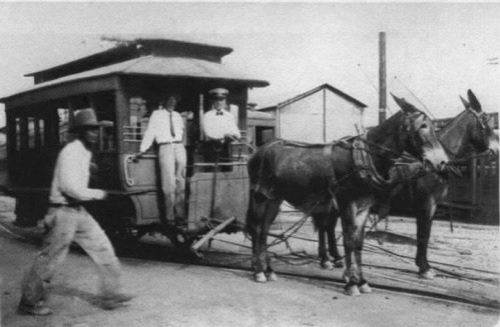
This line initially operated between Five Points downtown and West End. Three additional lines were added in 1873 and 1874. According to the Atlanta Street Railway’s Wikipedia entry, in 1889: “….the line owned 15 miles (24 km) of track, fifty streetcars and 200 horses and mules.”
Two years later, in 1891, the Atlanta Street Railway was absorbed into the Atlanta Consolidated Railway. Presumably the mules and their horse cars were retired, with the routes continuing as improved electric car lines.
Animal drawn cars had the operational advantages of steel wheel on steel rail, along with low start up costs. Typically, the horse cars were built by stagecoach builders and the like. The car bodies themselves were wood with metal wheels.
The animals represented significant operating overhead, along with the commensurate waste left in the streets. The horse car lines had also been decimated by the Great Epizootic of 1872, when hundreds of horses succumbed to Equine Influenza. The horse car lines had a considerable investment in their animals, and as passenger traffic on the horse car lines grew, popular concern about the welfare of the animals became a greater concern. As horse drawn vehicles slowly were phased out, the horse car lines switch to electric traction.
Little is known of the Atlanta Street Railway car roster, but Atlanta Transit / MARTA had a rubber-tired promotional car that captured the spirit:
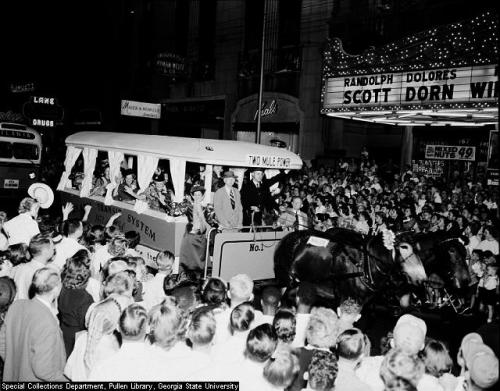
Atlanta Streetcar Rosters – Early Systems
Posted in Atlanta Streetcars on December 25, 2015| 4 Comments »
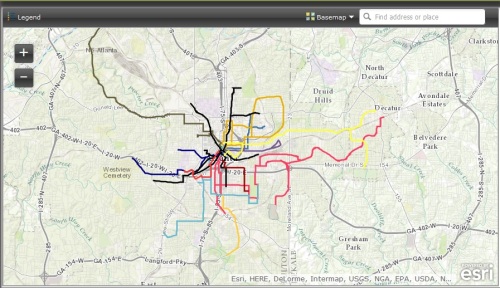
Early Atlanta Streetcar Companies
There are two definitive books about the Atlanta streetcar systems:
- Mule to MARTA, Vol 1 and Vol 2. Written by Jean Martin and published by the Atlanta Historical Society, these two volumes cover the transit scene in Atlanta. There was supposed to have been a third volume which would have covered the equipment used by the various streetcar companies, but it never made it to print.
- The Trolley Titans. Written by O. E. Carson and published by Interurban Press, this book also covers the Atlanta streetcar scene. And again the streetcar equipment roster remains unreported.
Additionally, there are at least two web pages that also cover the subject of Atlanta streetcars:
and
This blog section is meant to serve as a supplemental reference for these books and webpages. While there has been coverage about Atlanta’s streetcar systems, there has been scant coverage as to the equipment which these systems used.
Many of Atlanta’s early streetcar lines were operated with cars that were pulled by either horses or mules. At that point, circa 1870, that was all that they had available. Steel wheel on steel rail was an established technology, thanks to the steam powered railroads, but the motive power was like most other vehicles on the streets in that era. Horses.
The first successful electric powered streetcar line was Frank Sprague‘s Richmond, Virginia system. That was 1888, and as pointed out in the Wikipedia article about Sprague, there had been over 7o attempts at electric powered streetcars up to that point. The Atlanta and Edgewood Street Railroad first operated in 1889, three years after the formation of the company and one year after Richmond began operations. The electric trolley industry was born.
Below is probably the most popular image used to illustrate the early days of streetcars in Atlanta. It is the Inman Park car barn of the A&E, and through the grace of God and the efforts of countless civic minded preservationists, it still stands. A rare quantity for modernity-driven Atlanta.
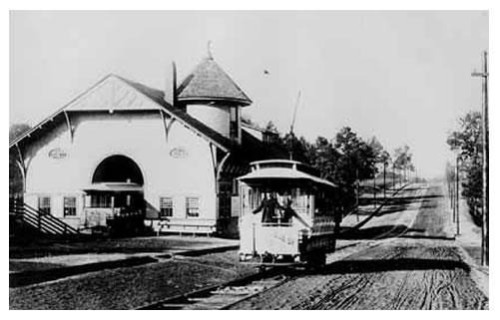
Inman Park Trolley Car Barn
While the carbarn itself still stands, who manufactured the streetcar, and how many of them were there? What is missing from the books and articles is a list of what equipment each of the individual systems used to transport passengers around Atlanta.
Not that there hasn’t been talk about it. And not that it is an easy matter. Like other historical subjects, there often is no corporate sentimentality about preserving company records for the benefit of posterity. Things changed, and there was little or no need to save outdated records. And so, into the trash.
I have my own theory as to why Jean Martin’s Mule to MARTA stopped dead in its tracks, but I did have an interesting telephone conversation with Mr. Carson. He has thoroughly researched the various equipment rosters, but it’s like a lot of other things in life, things get done in their own time. Or not. Mr. Carson had been active for many years with the Shoreline Trolley Museum, located in Connecticut. This museum holds the one active Atlanta streetcar, No. 948:
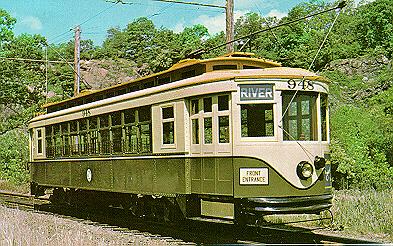
Georgia Railway & Power City Car
Gene Carson was responsible for the preservation of 948. And he has thoroughly researched the streetcar rosters of Atlanta, both the predecessor companies and Georgia Railway and Power’s (later Atlanta Transit). But there is the minor matter of his publisher, Interurban Press, going out of business.
And it is hard to get a train book published in the United States. Not impossible, but still hard. Not to mention the time and energy needed for such a project. Mr. Carson is retired and has moved to the Wine County of California to live with his daughter and granddaughter. I say that that is fair enough. The Shoreline has his research materials, and perhaps, in due time, his efforts will see print.
But, for the moment, all you’ve got is me. I’ll do my best. This section of my blog will cover the equipment rosters of the individual companies that led up to the consolidation in the form of the Georgia Railway & Power Company.
Resources
Much of my research on the Atlanta equipment rosters is sourced from the Martin books and the Carson book. In addition, the late Harold E. Cox, of Virginia, compiled substantial information about streetcars manufactured by a variety of companies such as Cincinnati, Brill, Laconia and others. So, it was possible to search the manufactured car list for the various Atlanta car lines. There was also significant help from the miracle of Google Books, a trove of old railway journals and the like. These journals would report transit activities in Atlanta, but need to be considered with a minor degree of skepticism since they also reported on the hopes and dreams of various promoters.
There’s a nice timeline, located here.
- Atlanta Street Railway Company (1871)
- West End & Atlanta Street Railroad (1872)
- Lithia Springs Railway (?)
- Gate City Street Railroad Company (1881)
- Metropolitan Street Railroad (1882)
- Fulton County Street Railroad (1883)
- Atlanta & Edgewood Street Railroad Company (1886)
- Atlanta Consolidated (1892)
- Atlanta & Chattahoochee (1893)
This timeline is a little simplistic since there were a number of mergers that eventually led to the Atlanta Consolidated system, which led to “The Second Battle of Atlanta”, where two great financial forces in the City fought it out for control.
There are also a number of “shell” companies that were formed. This was typically the first step in accumulating capital to start a transit operation; sometimes insufficient capital was available and these proposed companies would quietly disappear. To my knowledge, these existed on paper only:
- Southside Street Railroad Company – 1882
- Capital Street Railroad Company – 1884
- Baltimore Place & Peters Park Railroad Company – 1885
- Atlanta City & Suburban Streetcar Company – 1887
- Marietta Street Railroad Company – 1888
- West Atlanta Street Railroad Company – 1888
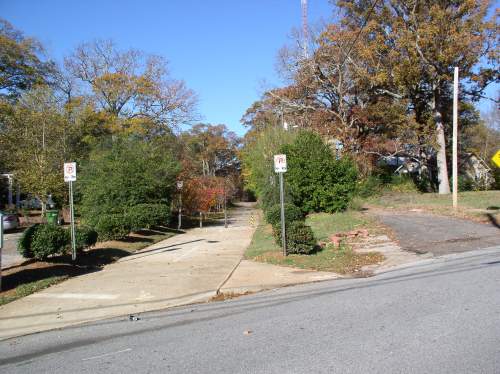
Trolley Private Right of Way
Click to access GAStreetcar.pdf
You must be logged in to post a comment.